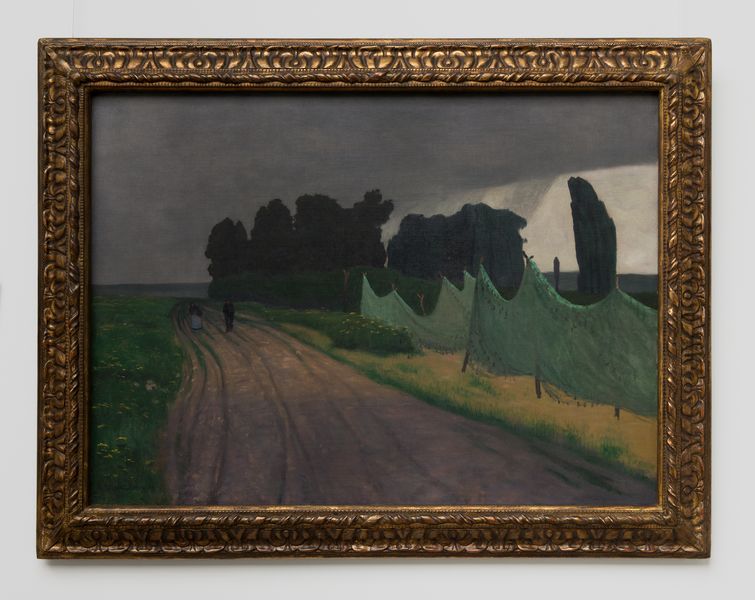 The Kröller-Müller Museum is delighted with the recent acquisition of Les filets, Honfleur, 1912 (73 x 100 cm, oil on canvas) by Félix Vallotton. The museum was able to purchase this painting from a private individual for the sum of € 750,000. The majority of Vallotton’s landscapes remain in Swiss private collections and are rarely put up for sale. The acquisition was made possible thanks in part to the participants in the BankGiro Lottery. The painting is a wonderful addition to the landscapes already in the collection by Camille Corot, Camille Pissarro, Claude Monet, Paul Cézanne, Paul Gauguin and Vincent van Gogh, among others.
The Kröller-Müller Museum is delighted with the recent acquisition of Les filets, Honfleur, 1912 (73 x 100 cm, oil on canvas) by Félix Vallotton. The museum was able to purchase this painting from a private individual for the sum of € 750,000. The majority of Vallotton’s landscapes remain in Swiss private collections and are rarely put up for sale. The acquisition was made possible thanks in part to the participants in the BankGiro Lottery. The painting is a wonderful addition to the landscapes already in the collection by Camille Corot, Camille Pissarro, Claude Monet, Paul Cézanne, Paul Gauguin and Vincent van Gogh, among others.
Félix Vallotton (Lausanne 1865–Paris 1925) is known mainly for his extensive graphic oeuvre. However, he also painted a large number of landscapes, the themes for which he found during long walks and bicycle rides. The works themselves were created in the studio.
‘I dream of a kind of painting that is removed from any literal imitation of nature; I would like to make landscapes based solely upon the emotion they evoked in me, a few suggestive lines, one or two sublime details, without meticulously adhering to the time of day or incidence of light.’
Vallotton found inspiration for the work at the Kröller-Müller in the northern French coastal town of Honfleur, where he owned a house and regularly spent his holidays. Honfleur was popular among painters; those who worked there included Gustave Courbet, Eugène Boudin, Claude Monet, Georges Seurat and Johan Barthold Jongkind.
But Vallotton disregarded the picturesque town itself and painted a desolate, weather-ravaged coastal landscape. The rather sombre atmosphere in the work is typical of Vallotton, with the ominous rainy sky and the dark row of trees painted almost like petrified silhouettes. The light that breaks through the opening in the clouds falls brightly on the upper edge of the almost turquoise fishing nets, which hang out to dry on sticks and on a part of the road, where two lonely figures walk.
Les filets, Honfleur is now showing in the permanent display of the collection.
